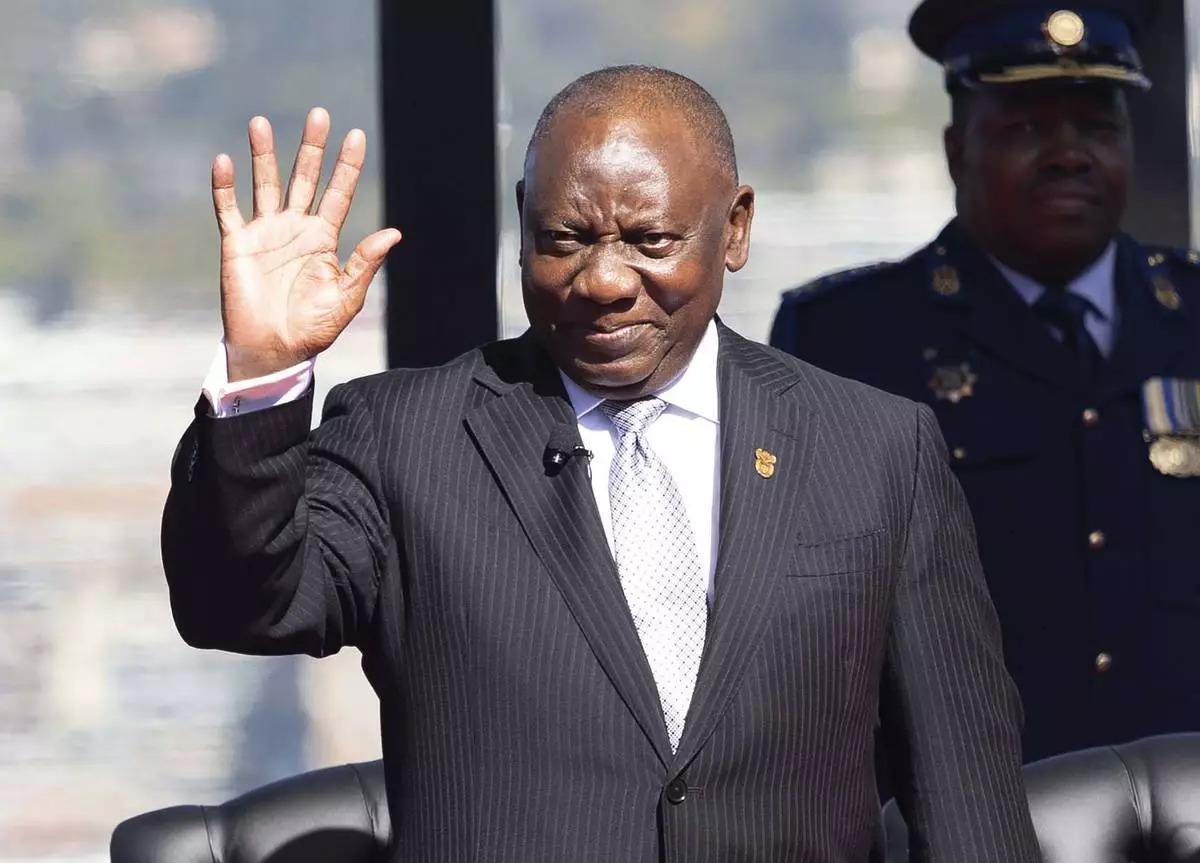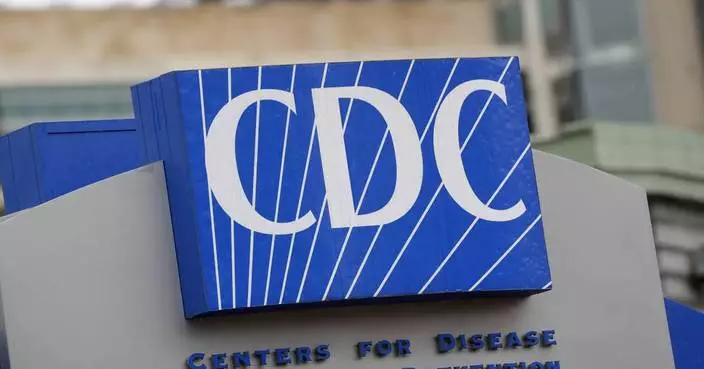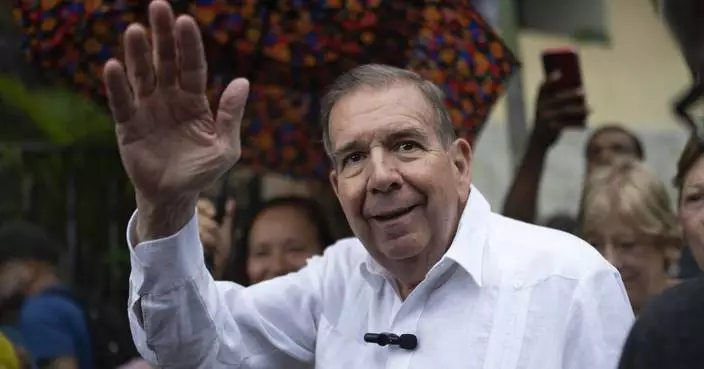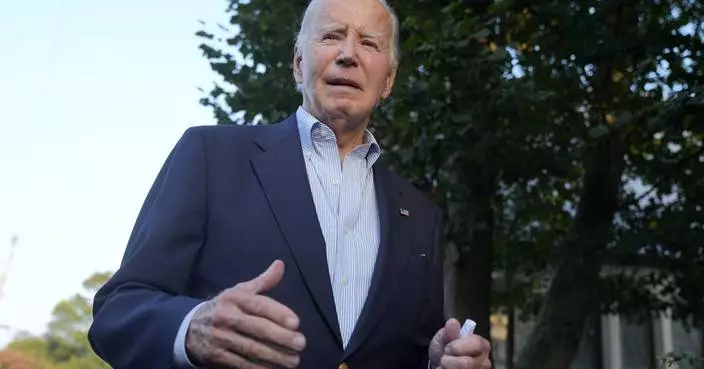NEW YORK (AP) — U.S. stocks weakened Thursday in the run-up to Wall Street's main event for the week, a speech by Federal Reserve Chair Jerome Powell coming on Friday.
The S&P 500 fell 0.9% for its worst day following a two-week rally. The Dow Jones Industrial Average dropped 177 points, or 0.4%, and the Nasdaq composite sank 1.7%.
Stocks fell as Treasury yields cranked up the pressure in the bond market following some mixed data on the U.S. economy, which has been slowing under the weight of high interest rates meant to get inflation under control.
One report showed slightly more U.S. workers applied for unemployment benefits last week than expected. The number is still low relative to history, but the uptick could signal a job market that continues to cool.
A second report, meanwhile, suggested U.S. business activity remains deeply split. Growth for services businesses is accelerating, according to preliminary data from S&P Global Market Intelligence. But the country’s manufacturing sector appears to be contracting at a more severe rate.
Overall, the data suggested the U.S. economy is still growing but pointed to some fragility.
“Growth has become increasingly dependent on the service sector as manufacturing, which often leads the economic cycle, has fallen into decline,” said Chris Williamson, chief business economist at S&P Global Market Intelligence.
The Fed has pulled its main interest rate to the highest level in more than two decades in hopes of restraining the economy enough to stifle inflation but not so much that it causes a recession. With inflation slowing, the wide expectation is for the Federal Reserve to cut interest rates at its next meeting in September, which would be the first easing since the COVID crash of 2020.
That’s why so much attention is on Jackson Hole, Wyoming, where Powell will speak Friday at an economic symposium that’s been home to big Fed policy announcements in the past. The hope is Powell will give clues about how quickly and deeply the Fed may cut rates to ease conditions for the economy.
One danger is if expectations for coming cuts have gone overboard among investors, something that has frequently happened historically. That could make the drop in Treasury yields since the spring overdone. The drop has helped pull mortgage rates lower, which in turn helped sales of previously occupied homes stop a four-month slide in July.
In the meantime, U.S. companies continue to report mostly better-than-expected profits for the springtime.
Internet-connected exercise company Peloton soared 35.4% after it topped sales forecasts and lost less money in the latest quarter than analysts were expecting. It achieved modest revenue growth for the first time in more than two years.
Another winner of the pandemic that saw its fortunes weaken afterward, Zoom Video Communications, also rose following its profit report. It climbed 13% after delivering better results and revenue for the latest quarter than expected.
But more stocks fell on Wall Street than rose, including Nvidia, which was the heaviest single weight on the S&P 500. It erased an early gain to fall 3.7% ahead of its own highly anticipated profit report coming next week.
It was briefly the strongest force pushing upward on the S&P 500 earlier in the day, but its stock has been swinging sharply over the last month amid worries that its price shot too high amid a frenzy around artificial intelligence. Even with Thursday’s loss, Nvidia's stock is still up 150% for the year so far.
Also on the losing side of Wall Street was Snowflake, which fell 14.7% despite topping analysts’ expectations for profit and revenue in the latest quarter. It gave a forecast for product revenue in the current quarter that fell short of what analysts were estimating.
Advance Auto Parts tumbled 17.5% after its profit for the latest quarter came up short of Wall Street’s expectations. It cited a “challenging demand environment” and cut its forecast for profit over the full year well below what Wall Street was expecting.
All told, the S&P 500 fell 50.21 points to 5,570.64. The Dow dropped 177.71 to 40,712.78, and the Nasdaq lost 299.63 to 17,619.35.
In the bond market, the yield on the 10-year Treasury rose to 3.86% from 3.80% late Wednesday.
In stock markets abroad, indexes made mostly modest moves across Asia and Europe. South Korea’s Kospi rose 0.2% after the Bank of Korea decided at its monetary policy meeting to keep rates unchanged.
Hong Kong’s Hang Seng was an outlier and jumped 1.4%.
AP Business Writers Yuri Kageyama and Matt Ott contributed.
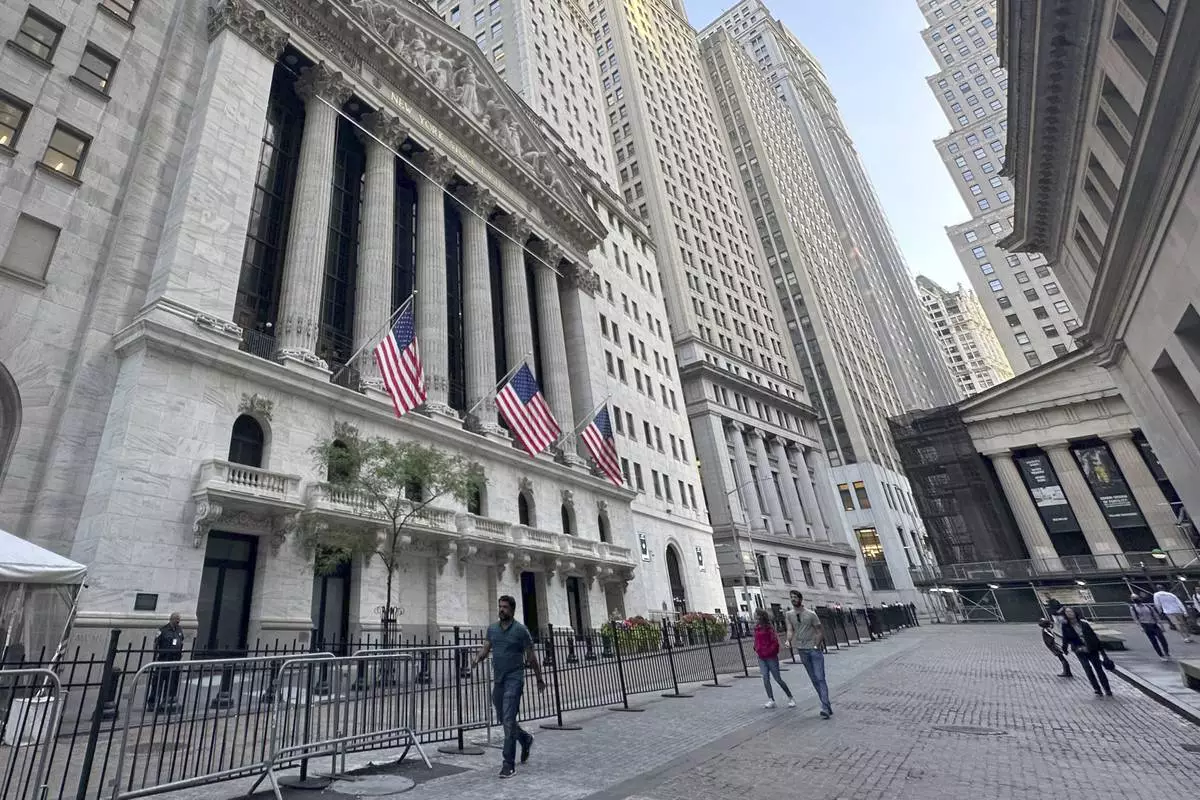
The New York Stock Exchange is shown on Wednesday, Aug. 21, 2024, in New York. (AP Photo/Peter Morgan)
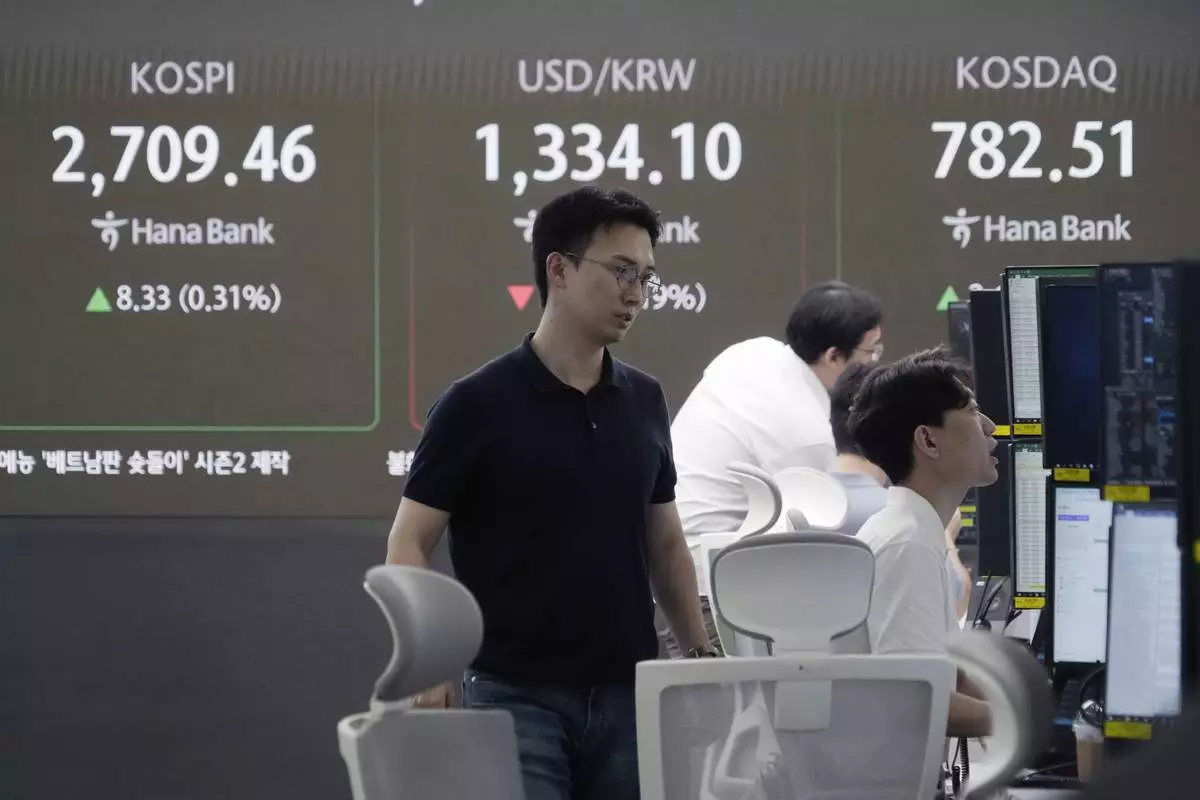
Currency traders work near a screen showing the Korea Composite Stock Price Index (KOSPI), top left, and the foreign exchange rate between U.S. dollar and South Korean won, top center, at the foreign exchange dealing room of the KEB Hana Bank headquarters in Seoul, South Korea, Thursday, Aug. 22, 2024. (AP Photo/Ahn Young-joon)
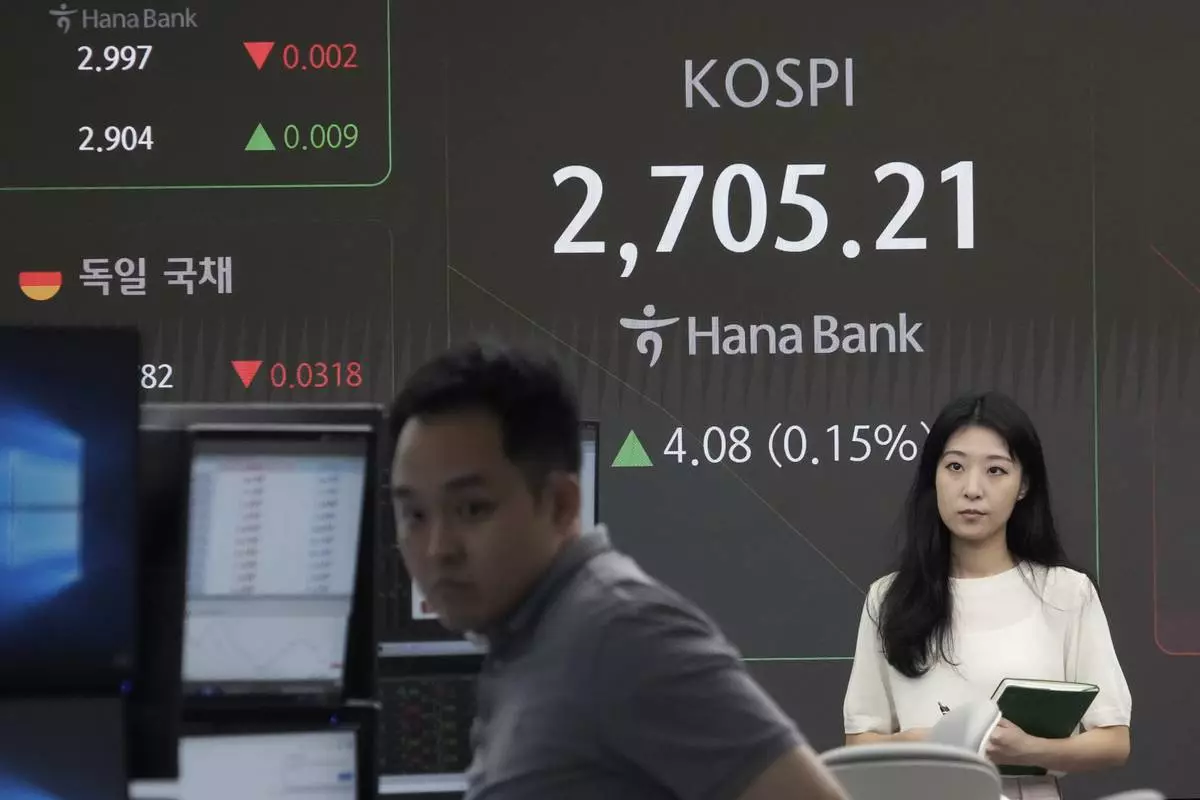
A currency trader passes by a screen showing the Korea Composite Stock Price Index (KOSPI) at the foreign exchange dealing room of the KEB Hana Bank headquarters in Seoul, South Korea, Thursday, Aug. 22, 2024. (AP Photo/Ahn Young-joon)
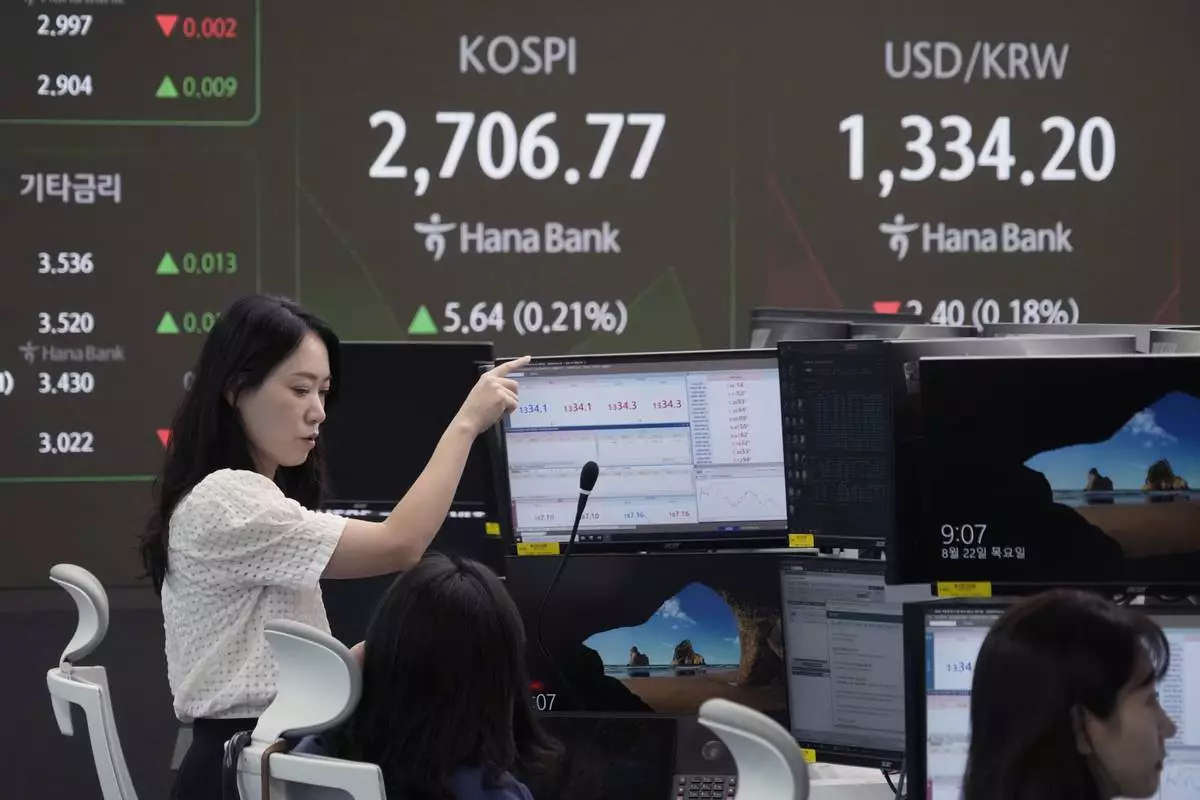
A currency trader gestures near a screen showing the Korea Composite Stock Price Index (KOSPI) and the foreign exchange rate between U.S. dollar and South Korean won, top right, at the foreign exchange dealing room of the KEB Hana Bank headquarters in Seoul, South Korea, Thursday, Aug. 22, 2024. (AP Photo/Ahn Young-joon)



